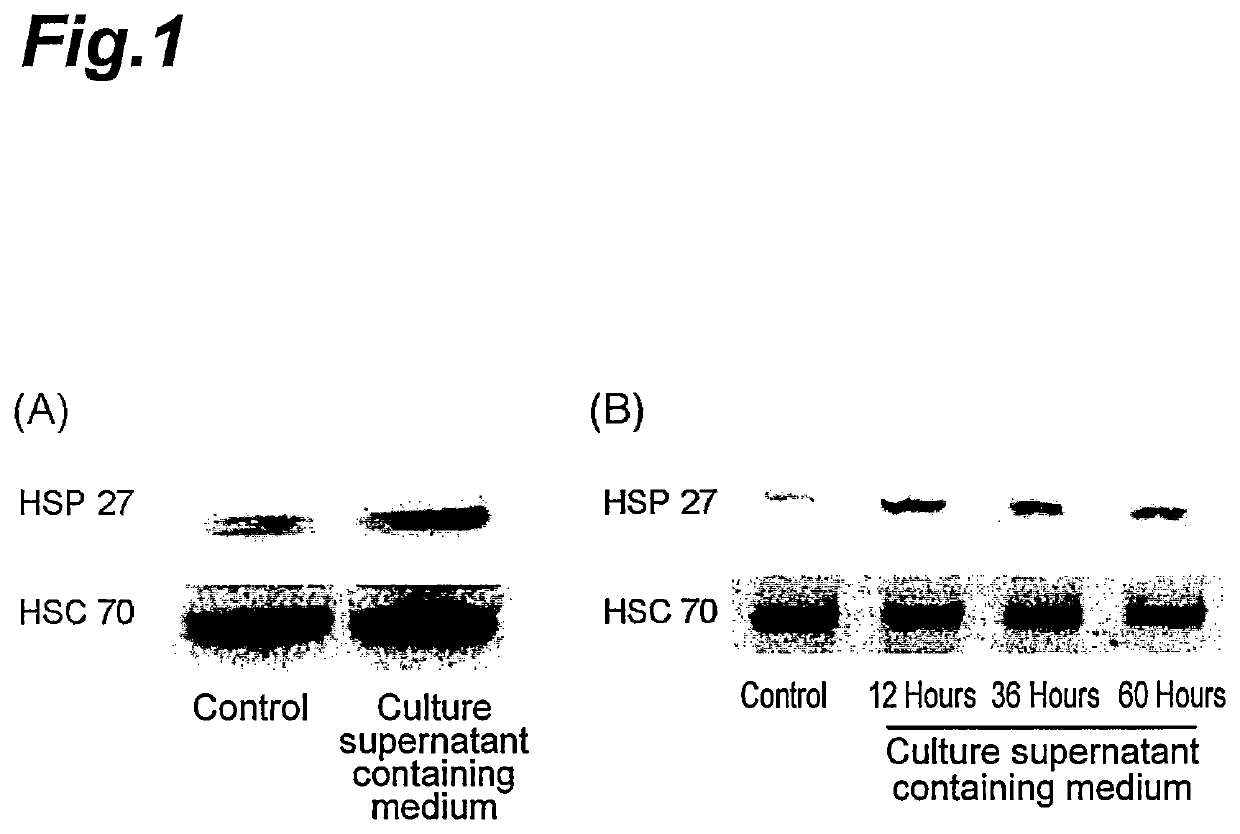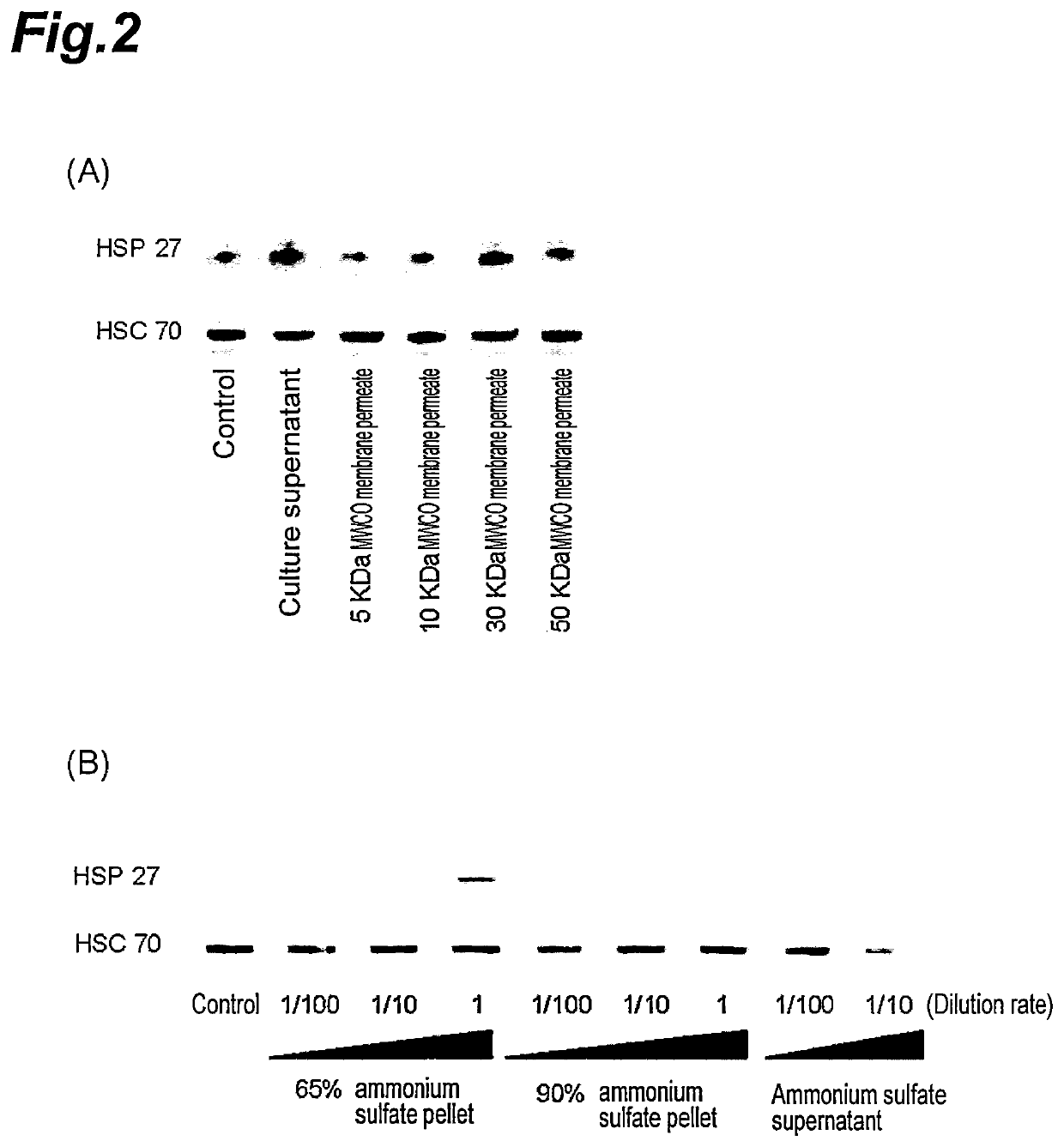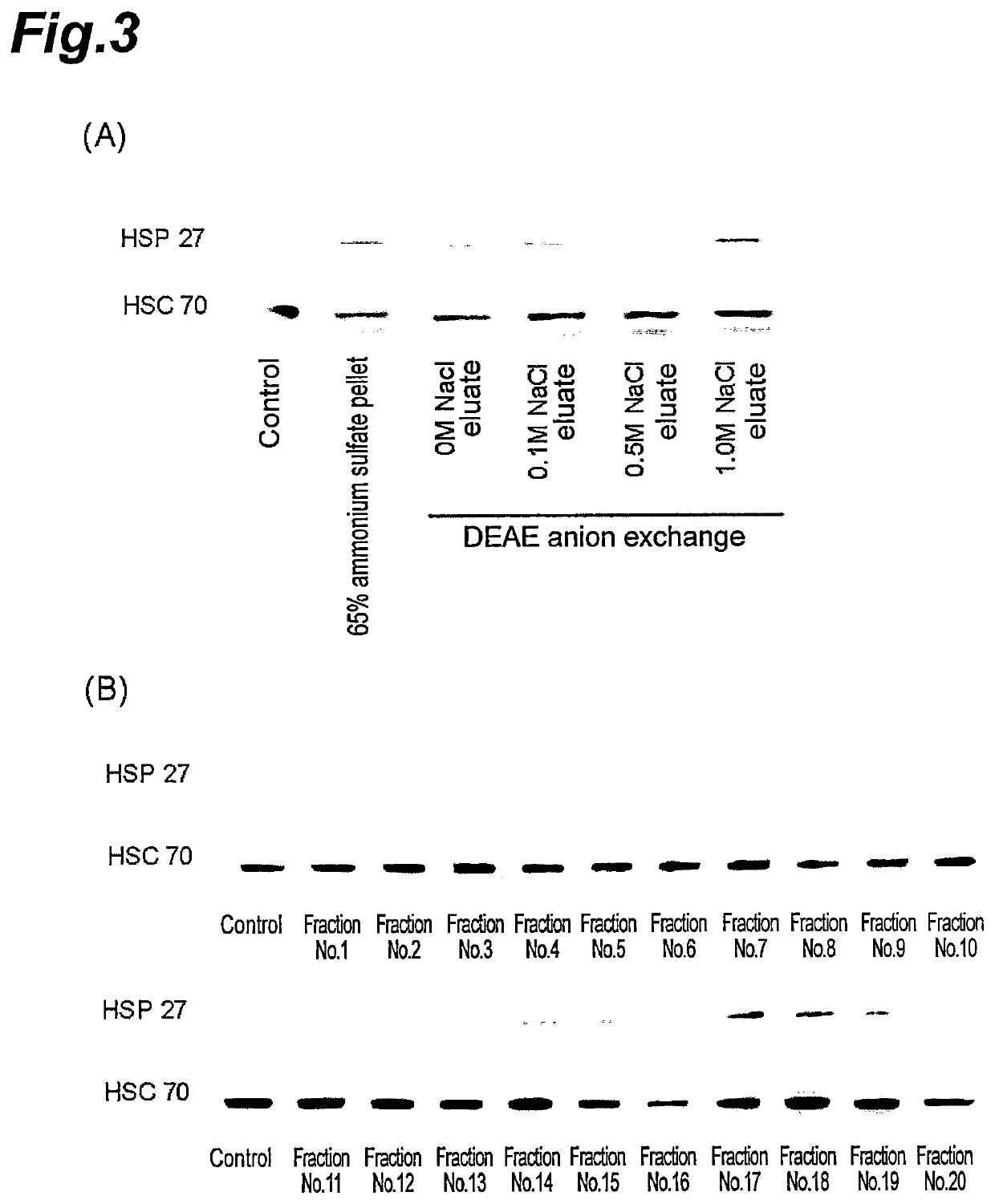Intestinal protectant
a technology for protecting the intestinal tract and intestines, applied in the field of intestinal protectants, to achieve the effect of suppressing the decline of the intestinal tract barrier function, preventing or ameliorating inflammatory bowel diseases, and reducing the risk of infection
- Summary
- Abstract
- Description
- Claims
- Application Information
AI Technical Summary
Benefits of technology
Problems solved by technology
Method used
Image
Examples
example 1
Expression Induction of HSP 27 by Culture Supernatant of Lactobacillus brevis SBC8803 Strain
[0071]Using human colon cancer-derived intestinal tract epithelium cell (Caco-2 / bbe cell), the expression induction of HSP 27 by the culture supernatant of a lactic acid bacterium, Lactobacillus brevis SBC8803 strain was analyzed.
[0072](Preparation of Culture Supernatant)
[0073]Lactobacillus brevis SBC8803 strain was cultured in DeMan-Rogosa-Sharpe (MRS) medium (made by Difco Laboratories) for 24 hours at 37° C. in an incubator to obtain the culture supernatant. Further, unused MRS medium was prepared as a control. Next, the culture time was changed to 12 hours, 36 hours and 60 hours to obtain the culture supernatants in the same manner. The OD600 values of the culture broth when cultured for 12 hours, 36 hours and 60 hours were 0.069, 0.443 and 0.398, respectively. These values, on a basis of lactic acid bacterium count, were 0.11×109, 1.07×109, 0.95×109 cfu / ml, respectively.
[0074](Culture of...
example 2
Separation of HSP 27 Expression Inducing Substance
[0084]Since it was revealed that the expression of HSP 27 can be induced by the culture supernatant of Lactobacillus brevis SBC8803 strain, the separation of HSP 27 expression inducing substance was subsequently undertaken.
(Separation of HSP 27 Expression Inducing Substance Using an MWCO Membrane)
[0085]The culture broth of Lactobacillus brevis SBC8803 strain was subjected to centrifugal separation for 10 minutes at a centrifugal acceleration of 500×g, the culture supernatant was collected and filtered using a filter having a pore size of 0.2 μm to obtain the filtrate. The components contained in the obtained filtrate were fractionated using a Vivaspin ultrafiltration spin column (made by Vivascience) equipped with an MWCO membrane with a molecular weight cut off (MWCO) of 5 kDa, 10 kDa, 30 kDa or 50 kDa. Next, the expression induction of HSP 27 by the permeate passed through the MWCO membrane was analyzed in the same manner as in Exa...
example 3
Isolation of HSP 27 Expression Inducing Substance
[0092]The HSP 27 expression inducing substance was isolated from the 65% ammonium sulfate pellet of Example 2.
[0093](Anion-Exchange Chromatography Separation)
[0094]An aqueous solution of the 65% ammonium sulfate pellet was added to a column filled with DEAE Sephadex A-50 (made by GE Healthcare). Next, 0 M, 0.1M, 0.5 M and 1M NaCl solutions prepared with 20 mM Tris-HCl (pH 8.5) were added in this order to the column, from which the adsorbed components were eluted. The expression induction of HSP 27 by each eluate was analyzed in the same manner as in Example 1.
[0095](Size Exclusion Chromatography Separation)
[0096]The fraction eluted from the 1.0 M NaCl by the anion-exchange chromatography was loaded into the column filled with Sephadex G-100 and eluted with 20 mM phosphate buffer (pH 6.5). The eluate was collected in 5 ml per fraction in 20 divided fractions. The expression induction of HSP 27 by each eluate of the obtained 20 fraction...
PUM
 Login to View More
Login to View More Abstract
Description
Claims
Application Information
 Login to View More
Login to View More - R&D
- Intellectual Property
- Life Sciences
- Materials
- Tech Scout
- Unparalleled Data Quality
- Higher Quality Content
- 60% Fewer Hallucinations
Browse by: Latest US Patents, China's latest patents, Technical Efficacy Thesaurus, Application Domain, Technology Topic, Popular Technical Reports.
© 2025 PatSnap. All rights reserved.Legal|Privacy policy|Modern Slavery Act Transparency Statement|Sitemap|About US| Contact US: help@patsnap.com



